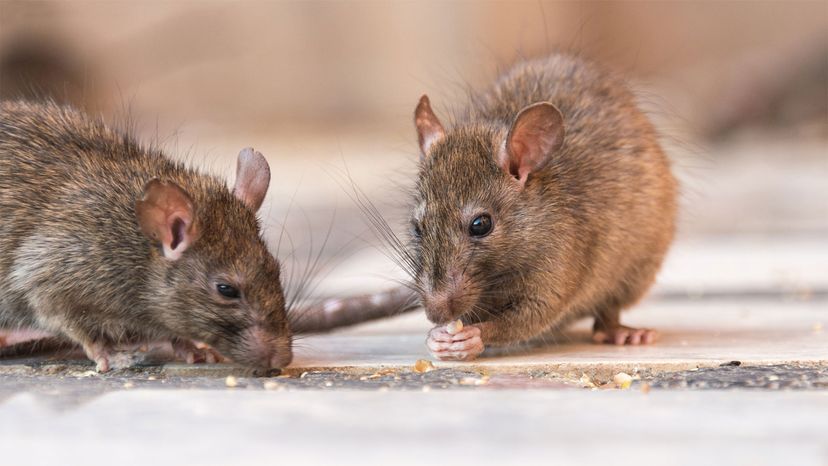Rats often scamper through restaurants at night, searching for food, spreading bacteria and droppings in revolting ways. In rare situations, they'll even attack humans, biting them repeatedly if they can't defend themselves. And because their teeth grow continuously, at a rate of up to 5 inches (12.7 centimeters) per year, rats gnaw on just about anything to file down their teeth, from cinder blocks to metal sheeting to the electrical wiring in homes and vehicles, causing major damage and potential fire hazards.
Rats are adept climbers; they can squeeze through holes the size of U.S. quarter, survive falls of up to 50 feet (15 meters), and swim for days without drowning, just a few reasons that attempting to control their populations is often downright exasperating. In 2017, for example, New York City – a notorious haven for these large rodents – launched a $32-million war on rats. In spite of those efforts, and those in other cities, rat populations continue to explode, partially because climate change is leading to longer breeding seasons, allowing females to give birth to extra litters.
Mike Deutsch is a medical entomologist and technical director of Arrow Exterminating Company in Lynbrook, New York. He says via email that rats make their presence known with "fecal droppings, urine stains, gnaw marks on materials and the presence of live and dead rodents on or in the structure. Rats have oily fur and leave oily stains on surfaces that they frequently use." Many homeowners notice behavioral changes in their pets, too, as dogs and cats may stare at walls or exhibit excitement when they detect rodents that humans cannot.
There's no "magic bullet" for rat control, says Deutsch. Rat exterminators lean on a philosophy called Integrated Pest Management (or IPM), which requires them to weigh mechanical, physical, cultural and chemical control options in their efforts to stamp out unwanted intruders. Doing so is easier said than done.
"Rat abatement is very challenging," says Deutsch. "You must understand the biology, behavior and ecology of these animals to effectively eliminate them from a structure." Rats thrive in human filth, particularly in places with high population densities. That's why cities riddled with easily-accessible trash and aging, holey buildings, like New York City, are particularly active rat hotspots.



